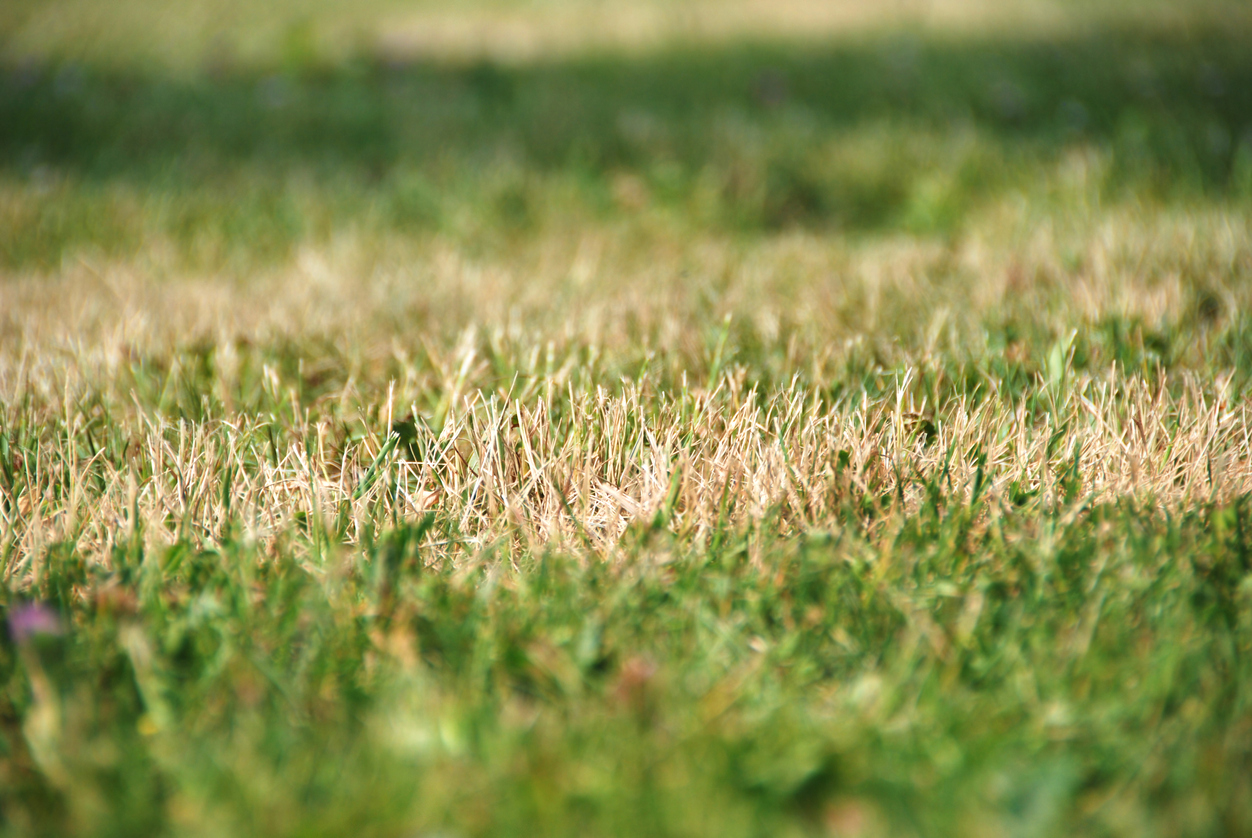Most summers are tough on our New England lawns, and for 2020, this has been especially true. My recent blog posts have addressed black patches and brown lawns all due to the high heat, humidity and drought. I am seeing chinch bugs and lawn diseases such as brown and summer patch. The good news is that fall is almost here and it’s the perfect time to help your lawn recover while preparing it for winter.
The Benefits of Fall
Warm soils, cool nights, more consistent rainfall (hopefully) and dying annual weeds make fall the ideal time for repairs, soil improvements and helping the lawn prepare for winter. And, all the recommended fall applications are natural or 100% organic ways to help the lawn recover, focus on root growth and store energy. Here is the list of important falls services.
Aeration & Overseeding
This is the most important fall treatment you can do to help your lawn recover. Core aeration reduces compaction thereby improving availability of air, water and nutrients to the grass while enhancing a healthier root system below ground. The key is to extract a good core, so aeration shoes and lightweight machines just won’t work. Overseeding, done in conjunction with aeration, thickens the density of an existing lawn. Chippers uses up to five custom blends of our grass seed specifically selected for each location within a lawn, i.e. shady, high sun.
Compost Tea & Seaweed
A healthy lawn really does start with healthy soil. Compost tea and seaweed liquid applications are 100% organic treatments to add micronutrients and organic matter to the soil. Compost tea has more of the bio-nutritional goodies including bacteria, fungi, humates, kelp and chitin. Think of them both as probiotics for your lawn. A healthier root system is better able to withstand drought, insect and disease pressures and recover faster. Overtime, the need for fertilizers and pesticides can be reduced.
Natural Slow-Release Fertilizer
Our slow-release, zero phosphate natural or organic fertilizer provides key nutrients. Most lawns require a minimum of 3lbs of Nitrogen per year for superior greening and health. When done in combination with overseeding, the new and older turf gets a healthy bump in preparation for next spring.
Lime
Organic lime raises soil pH to reduce acidity, improves seed germination and reduces disease resistance. We have two types of lime, a high calcium and magnesium. High calcium lime also adds vital calcium, iron and humic acid for healthier turf. Our new dolomitic-based lime not only maintains a proper soil pH, but also supplies the vital micronutrient Mg/magnesium. Mg plays a key role in photosynthesis as part of chlorophyll. Low levels of Mg make your lawn more susceptible to weather stress, disease, and pests.
Soil Restoration
This organic product replicates the fall leaf litter and forest debris that is absent from most landscape soils. Healthy soil has a diverse biology that is rich in organic matter, contains stable carbon, supports a diverse ecology, and retains water and nutrients. Soil restoration contains advanced composts, carbon soluble humates, and microbes. Over time, repeat applications will continue to build soil health and increase plant health and vigor naturally, especially in drought conditions. This treatment is done after aeration but before overseeding to assist in drought tolerance.
Potassium
The three components of fertilizer are NPF: nitrogen, phosphate and potassium. Many of our Vermont and New Hampshire lawns have low levels of potassium, due mainly to the prevalence of sandy soils that have a difficult time retaining the highly soluble potassium. A high potassium-only fertilizer applied in the fall improves winter hardiness, spring greening, summer drought tolerance while reducing the likelihood of red thread disease.
Weed Suppression
Fall is an excellent time of year to treat for weeds because with the cooler temperatures, weeds will continue to grow. When a weed is actively growing, it is also actively absorbing the weed-control product, producing more effective results. We do have an organic product that can be done with overseeding in addition to traditional weed control.
Fall Tick Control
While not a treatment for your lawn’s health, we would be remiss not to mention the importance of a fall tick-control application(s). Tick populations can be reduced any time of year, but the spring and fall are the most vital because of their life cycle. In the spring to early summer, the goal is to reduce last year’s adult ticks before they can breed. In the fall, it’s important to reduce the population before they can overwinter and emerge the following spring. Applications are available in organic or traditional blends and both achieve excellent results. The costs are comparable but the staying power of an organic treatment is shorter and may require an additional application.
Nearly every lawn has incurred some degree of heat and/or drought-related damage this past summer. Take action this fall when turf is in a recovery mode and when aeration with overseeding works the best to help patchy, damaged lawns. While we all love to get outside in the spring and start our lawn care, please don’t wait to take action. The cold soil, the germinating crabgrass and annual weeds will reduce the results of the same treatments that can be done this fall.


